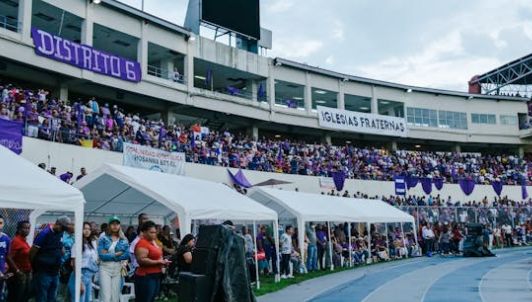
There was a time when going to a live sporting event meant buying a single ticket, finding your seat, and maybe grabbing a hot dog while yelling at a ref. But just as streaming changed how we consume entertainment, the live sports experience is undergoing its own transformation. And leading that shift is a curious concept that sounds more Silicon Valley than stadium bleacher: the subscription model.
Imagine paying a monthly fee—like Netflix or Spotify—to attend a variety of games, across different sports, with flexible seat options, perks like behind-the-scenes access, and even discounts on concessions. It’s already happening. From Major League Baseball clubs to European football teams and college programs in the U.S., the season ticket is being reimagined. But does this model enhance accessibility and fan engagement, or does it dilute tradition and gatekeep in new ways?

The Season Ticket’s Identity Crisis
The traditional season ticket has always been both a badge of loyalty and a financial commitment. You pick your team, lock in your seat, pay in bulk, and hope the season’s worth it. It works great for die-hard fans and corporate clients, but it leaves little room for spontaneity or casual attendance.
Over the years, teams have struggled to fill stadiums consistently. With high-definition broadcasts, replays, commentary, and the comfort of your own couch, live attendance has become harder to justify—especially when ticket prices, parking, and in-stadium food can cost as much as a short vacation.
That’s where subscriptions come in. By offering flexibility and added value, sports organizations hope to lure back fans who’ve grown used to binge-watching games rather than braving traffic to get to one.
What Do These Subscriptions Look Like?
These models vary widely, but they share a few common traits:
- Monthly or annual payments instead of lump-sum ticket buys.
- Tiered memberships, allowing different levels of access—think general admission vs. courtside privileges.
- Dynamic seating, where fans don’t always get the same seat, but rotate based on availability and tier.
- Added perks, like exclusive content, early access to merch, loyalty programs, or invite-only events.
For example, the San Francisco Giants have experimented with a “Ballpark Pass” that grants general admission access to all home games in a month for a flat fee. In college sports, programs like the University of Minnesota offer subscription models where fans can attend multiple sports for one bundled price, appealing to alumni and locals looking for a broad experience.
This shift isn’t just about tickets. It’s about creating a fan ecosystem—more continuous, more habitual, and more tied to the brand. The goal: not just to sell seats, but to lock in long-term engagement.
The Pros: Access, Flexibility, and Loyalty
One of the most obvious upsides of subscription-based attendance is accessibility. Instead of shelling out hundreds upfront, fans can pay as they go, making the experience more affordable for younger audiences and casual attendees. It’s especially appealing for families or students who might be priced out of traditional season packages.
There’s also flexibility. With dynamic seating, fans can choose which games they want to attend, and often which seat zone fits their mood—or budget. Want to bring a friend to a big game? Some models let you roll over credits or trade access.
For teams, the subscription model creates a predictable revenue stream. Rather than banking on sell-outs or hoping playoff buzz drives ticket sales, clubs get steady monthly income and a trove of data on fan habits. This helps with everything from staffing concessions to targeting merch promotions.
The Cons: Loyalty Dilution and Seat Identity
Still, not everyone’s cheering. Traditionalists argue that the subscription model erodes the deep-rooted relationship between fans and their “seat.” Long-time season ticket holders often know the people around them, creating a mini-community inside the larger venue. Losing that consistency can feel like losing part of the ritual.
There’s also the question of scarcity. Part of what makes live sports electric is the sense that it’s special—a one-time, can’t-miss moment. When attendance is treated like a streaming service, there’s a risk that the perceived value of each event decreases. After all, if you can always just go next week, why rush?
Some critics even suggest the model benefits wealthier fans most. While it seems democratic on the surface, higher-tier subscribers still get better seats and access. In that way, it mimics the rest of the entertainment world: pay more, get more, and the premium experience remains gated.
Are All Sports Suited for This?
Subscription stadiums make more sense in certain sports than others. Baseball, with its long season and many home games, is a natural fit. Basketball and hockey, with their arena-based intimacy and frequent scheduling, also work well.
But for football (especially in the NFL or European leagues with fewer home games), the scarcity of events makes each ticket feel like gold. Convincing fans to share seats or go general admission in a packed stadium could backfire.
There’s also a cultural consideration. In cities where fandom is tied to generations of loyalty and physical season ticket cards handed down like heirlooms, trying to “modernize” the experience could alienate core supporters.
Looking Ahead: A Hybrid Future?
As with most shifts in entertainment and media, the likely outcome isn’t replacement—it’s layering. Season tickets won’t disappear. Instead, we’ll see a range of attendance models, much like how people consume TV through live broadcasts, on-demand streaming, and hybrid bundles.
Expect sports teams to offer traditional season passes, flexible subscription options, one-off premium experiences, and even digital access tiers—combining in-person attendance with virtual content. What works for a single millennial in L.A. isn’t the same as what works for a 60-year-old fan in Green Bay. The industry is beginning to recognize that.

Final Whistle
The subscription stadium isn’t just a new way to sell tickets—it’s a reflection of how entertainment has evolved. We want flexibility. We want value. We want to feel like insiders without being locked into rigid commitments.
As sports franchises wrestle with declining live attendance and shifting fan expectations, they’re borrowing tactics from tech and media. Whether that’s a smart play or just a passing trend remains to be seen.
But one thing’s for sure: the future of fandom won’t be one-size-fits-all. It’ll be tiered, trackable, and tailored—just like your streaming queue.






